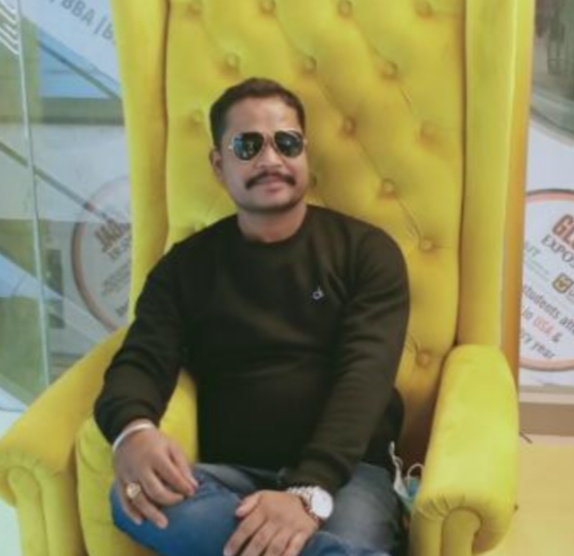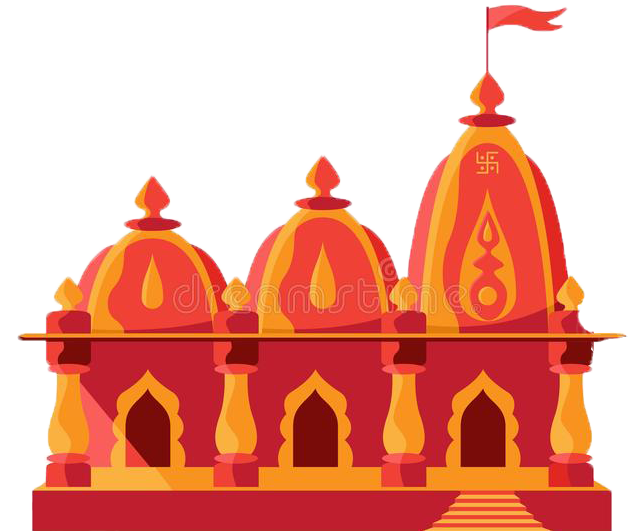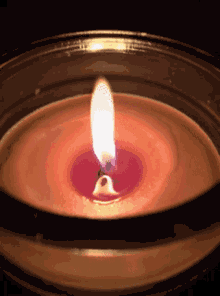This Temple Website sponsored by Mr. Anoop Singh, HSFC, Dwarka, New Delhi-110075.
Phone Numbers- 70117104088, 9136362391

Introduction and History in Brief
The beautiful temple is dedicated to Lord Gautam Buddh.
According to the Buddhist tradition, Gautama was born in Lumbini, now in modern-day Nepal, and raised in Kapilavastu, which may have been either in what is present-day Tilaurakot, Nepal or Piprahwa, India.[note 1] According to Buddhist tradition, he obtained his enlightenment in Bodh Gaya, gave his first sermon in Sarnath, and died in Kushinagar.
One of Gautama’s usual names was “Sakamuni” or “Sakyamunī” (“Sage of the Shakyas”). This and the evidence of the early texts suggests that he was born into the Shakya clan, a community that was on the periphery, both geographically and culturally, of the eastern Indian subcontinent in the 5th century BCE.[62] The community was either a small republic, or an oligarchy. His father was an elected chieftain, or oligarch.[62] Bronkhorst calls this eastern culture Greater Magadha and notes that “Buddhism and Jainism arose in a culture which was recognized as being non-Vedic”.
The Shakyas were an eastern sub-Himalayan ethnic group who were considered outside of the Āryāvarta and of ‘mixed origin’ (saṃkīrṇa-yonayaḥ, possibly part Aryan and part indigenous). The laws of Manu treats them as being non Aryan. As noted by Levman, “The Baudhāyana-dharmaśāstra (1.1.2.13–4) lists all the tribes of Magadha as being outside the pale of the Āryāvarta; and just visiting them required a purificatory sacrifice as expiation” (In Manu 10.11, 22). This is confirmed by the Ambaṭṭha Sutta, where the Sakyans are said to be “rough-spoken”, “of menial origin” and criticised because “they do not honour, respect, esteem, revere or pay homage to Brahmans.”[64] Some of the non-Vedic practices of this tribe included incest (marrying their sisters), the worship of trees, tree spirits and nagas.[64] According to Levman “while the Sakyans’ rough speech and Munda ancestors do not prove that they spoke a non-Indo-Aryan language, there is a lot of other evidence suggesting that they were indeed a separate ethnic (and probably linguistic) group.”[64] Christopher I. Beckwith identifies the Shakyas as Scythians.[65]
Apart from the Vedic Brahmins, the Buddha’s lifetime coincided with the flourishing of influential Śramaṇa schools of thought like Ājīvika, Cārvāka, Jainism, and Ajñana.[66] Brahmajala Sutta records sixty-two such schools of thought. In this context, a śramaṇa refers to one who labors, toils, or exerts themselves (for some higher or religious purpose). It was also the age of influential thinkers like Mahavira, Pūraṇa Kassapa, Makkhali Gosāla, Ajita Kesakambalī, Pakudha Kaccāyana, and Sañjaya Belaṭṭhaputta, as recorded in Samaññaphala Sutta, whose viewpoints the Buddha most certainly must have been acquainted with.[68][69][note 8] Indeed, Śāriputra and Moggallāna, two of the foremost disciples of the Buddha, were formerly the foremost disciples of Sañjaya Belaṭṭhaputta, the sceptic; and the Pali canon frequently depicts Buddha engaging in debate with the adherents of rival schools of thought. There is also philological evidence to suggest that the two masters, Alara Kalama and Uddaka Rāmaputta, were indeed historical figures and they most probably taught Buddha two different forms of meditative techniques.Thus, Buddha was just one of the many śramaṇa philosophers of that time.[73] In an era where holiness of person was judged by their level of asceticism,[74] Buddha was a reformist within the śramaṇa movement, rather than a reactionary against Vedic Brahminism.
Historically, the life of the Buddha also coincided with the Achaemenid conquest of the Indus Valley during the rule of Darius I from about 517/516 BCE. This Achaemenid occupation of the areas of Gandhara and Sindh, which lasted about two centuries, was accompanied by the introduction of Achaemenid religions, reformed Mazdaism or early Zoroastrianism, to which Buddhism might have in part reacted. In particular, the ideas of the Buddha may have partly consisted of a rejection of the “absolutist” or “perfectionist” ideas contained in these Achaemenid religions.
Vihara Karangdjati is one of the temples under the guidance of Sangha Theravada Indonesia, which is located in Yogyakarta. Founded in 1958, this temple is a historical development of Theravada Buddhism in DIY.
This is Spirituality development house for shared happiness kebahagiaan.
The location is cool and comfortable because it is in the middle of the rice fields. This monastery, besides being used for worship for the Buddhist community, is also often used for public discussion here.
Every Friday at 7pm there is a public meditation. After meditation there are chatting and eating.
The yoga time is usually on every Friday at 8:30 a.m.
There are lots of devotees always comes to pray Lord Buddha and meditate here.
Temple Photos
Videos from YouTube
Details awaited.
Presiding Deity
Lord Gautam Buddha
Timing
Monday to Sunday- Open timing MORNING 5am–6:00pm.
The winter season is perfect to visit as it is so hot in summers in Central java which can cause Illness,difficulties.
Aarti Timing
Details awaited.
Basic Facilities
Drinking Water, CCTV Security, , Shoe Store, Wash Rooms.
Activities
Details awaited.
Festivals
Buddha Purnima , Ullambana. Losar , Magha Puja Day , Asalha Puja Day , Uposatha ,Rumtek Chaam , Hemis Festival , Pavarana Day Lumbini Festival.
Famous Temples Nearby
- Lumbung. Buddhist-style, consisting of one main temple surrounded by 16 smaller ones.
- Bubrah. Buddhist temple, rebuilt between 2011 and 2017.
- Sewu. Buddhist temple complex, older than Roro Jonggrang. A main sanctuary surrounded by many smaller temples. Well preserved guardian statues, replicas of which stand in the central courtyard at the Jogja Kraton.
- Candi Morangan. Hindu temple complex buried several meters under volcanic ashes, located northwest from Prambanan.
- Candi Plaosan. Buddhist, probably 9th century. Thought to have been built by a Hindu king for his Buddhist queen. Two main temples with reliefs of Boddhisatva and Tara. Also rows of slender stupas.
- South of the Lara Jongrang complex
- Ratu Boko. Complex of fortified gates, bathing pools, and elevated walled stone enclosure, all located on top of the hill.
- Sajiwan. Buddhist temple decorated with reliefs concerning education. The base and staircase are decorated with animal fables.
- Banyunibo. A Buddhist temple with unique design of roof.
- Barong. A Hindu temple complex with large stepped stone courtyard. Located on the slope of the hill.
- Ijo. A cluster of Hindu temple located near the top of Ijo hill. The main temple houses a large lingam and yoni.
- Arca Bugisan. Seven Buddha and bodhisattva statues, some collapsed, representing different poses and expressions.
Near by Shops & Markets
👉Click HERE to look upon Markets and Shops near the Temple.
👉Famous for Shopping in Yogyakarta & Central Java
👉Famous for Shopping Handicrafts and Clothes in Central Java
Nearby Dharamshalas
Details awaited.
Hotels near Temple
👉Click HERE to look upon hotels nearby near Temple
Restaurants near Temple
👉Click HERE to look upon more restaurants near Temple.
Nearby Hospitals
RSIY PDHI Hospital
Panti Rini Hospital
RS. Bhayangkara Jogja
👉 Click HERE to look upon Hospitals nearby
Concerned Police Stations
Jl. Sepat No.1, Tegalsari, Kec. Tegal Bar., Kota Tegal, Jawa Tengah 52111, IndonesiaPhone: +62 283 351513
https://goo.gl/maps/roH8EyxPrDKXb3SDA
Managment Commity
Details awaited.
Miscellaneous information
Details to be taken.
Legal information
The temple is situated on legal site taking care by Govt. and Mandir Community, there is no legal obligation on Temple Property or Temple Schedule, Criteria,Rules etc..
Facilities to hold Functions
Details to be taken
Library
Details to be taken
Akharas
Details to be taken
Mehants, Pujaris, Archakas and Sewayats
Name:
Photo:
Phone Number:
Further Details:
Details to be updated.
Gau Sewa, Birds and otheranimals Sewa
Initiattives like Pashu Sewa, Pakshi Sewa, Langar Sewa, Vedic Pathshalas etc Plannings in process.
Langar Sewa
Details awaited.
Gurukul/Vedic Pathshalas
Details awaited.
Mitra Mandal Link for Advice/Guidance*
This is a group of devotees of Govardhan Mandir who regularly go for darshans and Govardhan Parikrama.
Google Forms will be available shortly to become member of this group.
Modes of Travel
By Air
The fastest and the most convenient way to travel to Indonesia from India is by air. You can take a flight either to Soekarno–Hatta International Airport in Jakarta or Ngurah Rai International Airport in Denpasar. There are several airlines from India that offer connecting flights to these destinations. Indonesia is roughly 4483 kilometres (2786 mile) from India and the flight time is around 5 hours. You can book your flight from several major cities in India, such as Mumbai, Delhi, Bengaluru, Amritsar, Chennai, and Cochin, all of which offer you nonstop flights to your destination.
Soekarno–Hatta International Airport in Jakarta is the busiest airport and it is a mere 20 kilometres from the city centre. The airport offers all the amenities that the modern traveller desires – shops, cafes, lounges, ATM, etc. There could a bit of a wait while arriving or departing this airport. Ngurah Rai International Airport in Denpasar can cater to large as well as smaller aircrafts making it your preferred choice if you’re heading to Bali.
There are several airlines that offer direct flights to Indonesia. Air India, All Nippon Airways, Asiana Airlines, Cathay Pacific, China Southern Airlines, China Eastern Airlines and Emirates are some of the international carriers that can fly you to Indonesia. Garuda Indonesia is the national carrier, and you can travel within the country by catching a domestic flight on this airline
Connectivity within the country is excellent and you can easily get yourself a forward flight or alternate mode of transport to wherever your destination in Indonesia is. You can also check out the things to do in Indonesia.
By Sea
If you are feeling a little bit adventurous and also have a lot of time on hand, you can try traveling to Indonesia by sea. The experience of just relaxing aboard a luxurious ship, being lulled by the waves, is unlike any other. Sit back and enjoy the many comforts that the trip offers you.
There are no direct cruises from India and you will first need to head to Singapore. From there, you can hop on board a cruise going to Australia or one doing a circuitous trip around the Southeast Asian countries. You can disembark in Bali where you can continue the rest of your vacation. The cruise from Singapore to Australia usually takes about 6-7 days to reach Bali, with a halt in between at Semarang.
Visitors view about the Temple
The Data mentioned above and links are taken from Google, YouTube, TripAdvisor, Justdial, Wikipedia, Google Maps etc,. which is already in public domain. All such informations are only to facilitate the devotees to have proper darshan and there is no intentions of making any financial benefits out of them.
This website developed and maintained by :
Mc Luhan Madhyam LLP
176, Pocket-2, Sector-19, Dwarka, New Delhi-110075.
Phone Number: 01145118299, 9899802299



